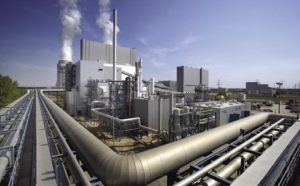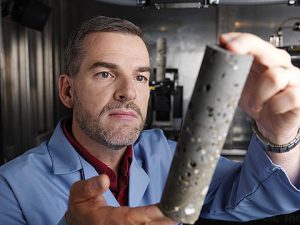Late last month, Drax, a UK power generator, announced it would not invest in the construction of a much-touted carbon capture and storage project being planned at its Yorkshire site. This latest setback, prompted mainly by a cut in government subsidies, casts further doubt on the feasibility of the technology as a means to cut carbon-dioxide emissions, as the process is only economic when it is combined with oil extraction.
Carbon capture and storage (CCS) had been lauded by the coal and power industries as having potential to deliver big cuts in ‘business-as-usual’ carbon emissions and as a tool to help keep global temperature increases to less than 2C. The International Energy Agency, the Intergovernmental Panel on Climate Change and the World Bank have all highlighted the urgent need for CCS, as have numerous research and academic bodies.
Some, such as the IEA, have said that thousands of power plants and industrial facilities such as cement plants would need to be operational by mid-century to give the world a fighting chance of avoiding climate change.
But huge costs, and technological challenges, suggest that no more than a handful of projects will be developed in the coming decade, hindering a longer term roll-out. This could mean that the technology only makes a miniscule contribution to the huge cuts GHG emissions that scientists say are required by 2050.
CCS involves collecting carbon-dioxide gas (CO2) and transporting it to underground reservoirs, such as depleted oil and gas wells, where it can be stored safely and permanently. Elements of the technology have been used for many years as a way to boost recovery of oil from existing wells.
The Global CCS Institute (GCCSI) has identified 11 large-scale projects for enhanced oil recovery (EOR) currently in operation worldwide that store more than 26 million tons a year of CO2. EOR projects that plan to store another 18 million tons a year are planned to come online by 2020.
Allan Baker, global head of power at Societe Generale in London, says CCS has run up against many of the early challenges that hindered offshore wind.
“While carbon capture technology isn’t new, a combination of technologies on this scale need to be demonstrated to build confidence.”
Because many power plants round the world wouldn’t be hooked up to a network that could squeeze oil out of old wells for CCS to make a big difference the costs of emitting will need to rise sharply and the expense of the technology would also need to fall far from current levels. And even if they were, there is no guarantee that these projects would be economic, given volatility in oil prices.
Only two ‘pure’ storage projects (i.e schemes that don’t use EOR), both located on gas production platforms in Norway’s North Sea, are presently operational.
The capture of CO2 from coal- or gas-fired power plants is a newer technique and more complicated than the current projects in the North Sea. While transport and storage of CO2 has been proven, capture technology is relatively untested. Although companies have developed a range of ways to trap the gas, both before and after fuel is burnt, their technology has yet to be proven on a large scale.
Two European countries are supporting efforts to develop commercial CCS projects at power plants. In the UK, before Drax’s withdrawal, two projects had been seeking to win government funding for commercial demonstration plants, while in the Netherlands. EON and Engie Energy are looking to build a CCS unit at a power station in Rotterdam. The UK and Dutch projects expect to receive final investment decisions early in 2016.
In North America the deployment of CCS at power plants has reached a more mature stage than in Europe, but these benefit from the revenues flowing from EOR. Canadian utility SaskPower started capturing CO2 from its Boulder Dam coal-fired power station last year, while in Mississippi, Southern Co. is constructing a capture unit at its Kemper County power plant.
Potential?
In developing countries, the economics of power generation underline the need for CCS in the views of many analysts. India and the Philippines are among those in pursuing the cheapest forms of large-scale power, which is most often produced by coal or gas and could be ‘locked in’ for up to 50 years.
While developed countries are deploying renewable and other low-carbon sources of energy at an increasing pace, emerging nations and the least-developed countries do not have the economic resources to acquire or develop advanced technologies such as solar photovoltaic and wind power at the scale required to replace fossil-fuel use.
The World Bank has pointed out that if the world is to achieve a goal of zero net emissions by 2100, carbon capture and storage will have to be widely used to prevent the cost of reducing emissions from doubling.
Nonetheless, the cost of CCS is already extremely high.
Expressed in terms of the cost of reducing carbon dioxide emissions, CCS and coal can achieve reductions at between $48-109/mt, according to the GCCSI in a July 2015 report, which suggests that current carbon allowance prices in the European market would need to increase by a factor of at least six before CCS can be considered competitive.
Slow progress
Cost has been a major factor in the relatively slow development of CCS; companies are uncertain whether they would ever see a return from such a large investment, and are reluctant to take on the task of funding and building a carbon capture plant on their own.
Mike Monea, president of capture and storage initiatives at SaskPower, said the company’s experiences with its first project means it can drive costs down.
“Our plant was expensive to build but the next one will be 30% cheaper,” he said.
The complexity of the technology is also a major challenge. While CCS has been used in the US for a number of years, in Europe the infrastructure has to be assembled from the ground up, according to Societe Generale’s Baker.
“In the US there is at least an existing infrastructure for gathering the CO2 and delivery to the Texas oilfields,” he said. “In Europe we’re starting from scratch; all the infrastructure has got to be built, and although using CO2 for EOR may be viable in the future, that’s some way away. Developing CCS in Europe is a bigger challenge because you’re combining pipelines and storage with a power station, leading to project-on-project risk.”
Rules will also have to be put in place to guide the development of CCS, observers point out ”
“The bottom line is that it will take time, given the scale and complexity of the projects and the lack of maturity of the market to support the projects,” says Baker.
Most countries have therefore focused on deploying renewable energy as an initial way to cut greenhouse-gas pollution, and CCS may have languished in comparison with wind and solar. However SaskPower’s Monea thinks nations may be ready to reconsider.
“A lot of countries have tried things like going to solar or wind, and have found the cost of their electricity has skyrocketed,” Monea said. “Reality is setting in, and if you can clean up the fossil fuels and reduce emissions to a very low level with CCS, that’s one of the solutions that power companies could use.”
CCS’ prospects are not helped by a lack of political support in many key countries. For example, efforts to develop the technology in Germany came to a halt in 2011 when the federal legislature failed to agree a law regulating the use of CCS. As a result, Vattenfall, one of the four largest utilities in the country, halted development of a demonstration project at Jänschwalde, saying it needed a clear legal framework in order to progress with its plans.
SaskPower’s Monea sees additional benefits from the use of CCS in China.
”We’ve been involved in China for quite a few years, and I think there’s no question that they have a problem with air quality,” he said. “What China’s learning is that our plant doesn’t just capture CO2; it also captures the majority of the particulates, and all the sulphur dioxide, those elements that cause breathing problems.”






